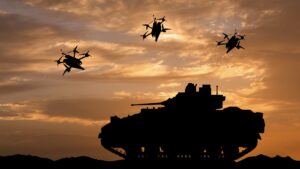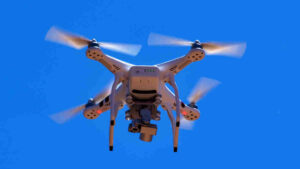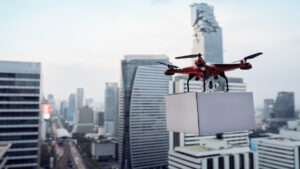Elsight says drones could make the difference between life and death for victims of natural disasters

The company’s beyond-visual-line-of-sight could be used to find survivors of the earthquake in Turkey and Syria. Pic via Getty Images.
Rescuers are in a race against time to find trapped people in the rubble after a magnitude 7.8 earthquake hit Turkey and Syria on Monday, with collapsed buildings and infrastructure presenting logistical issues for aid services.
Elsight (ASX:ELS) CEO Yoav Amitai says drones have a critical role to play in locating and accessing survivors in remote and hard-to-reach places.
This is particularly true in nations like Syria, where years of bombardment and airstrikes have weakened the foundations of buildings, making it extremely dangerous for rescuers to search the rubble.
“Drones have seen plenty of use by Search and Rescue teams in previous natural disasters, due to their ability to cover vast areas quickly and can be used in hard-to-reach areas, including inside buildings,” Amitai said.
Time is of the essence in Turkey and Syria
In the aftermath of earthquakes, time is of the essence, with search and rescue rushing to find survivors alive within a 7-day window.
Added to this, around 4 million people in Syria were already receiving humanitarian support, and with cholera outbreaks, conflict and brutal winters, aid organisations are already stretched to breaking point.
“Drone-based mapping is a key tool allowing responders to assess the damage and get the lay of the land, particularly in areas such as where the earthquake struck and where damage has been so severe that buildings, infrastructure and landscapes may have been significantly altered,” Amitai said.
Elsight hopes its technology could soon be applied in aid situations, particularly where time is of the essence in finding survivors and supporting communities who need vital food and medical aid.
The case for ‘Beyond Visual Line of Sight’
Elsight’s Halo connectivity platform for Beyond Visual Line of Sight (BVLOS), where the operator of the drone can’t physically see the device during some or even all of its flight, even across hundreds of kilometres, could have life saving applications during natural disasters.
Drones using the platform could play a vital role in countries like Turkey and Syria, not just searching for survivors, but in deploying medicine, food and aid in situations where roads have become inaccessible.
“Drone deliveries of food and medical supplies in the United States is already well established, by companies such as DroneUp, Spright and MissionGo,” Amitai said.
“During Hurricane Ian, we saw numerous cases of drones assisting in humanitarian missions and with disaster relief, delivering critical supplies including food, first aid kits and blood.”
Surveillance trials underway in Sydney
Australia’s Civil Aviation Safety Authority (CASA) has already approved BVLOS surveillance trials over Sydney beaches as part of the New South Wales Government’s more than A$85 million in shark mitigation measures over the next couple of years.
The trials will expand on the use of drones operated within visual line of sight by Surf Life Saving NSW.
Elsight says its platform also has applications in remote healthcare deliveries, with Swoop Aero recently awarded $1.8m in federal funding to expand operations that include transporting medical samples from remote locations to pathology labs.
Tracking floods and bushfire impacts
In South Australia, a state reeling from devastating floods, drone player Carbonix has partnered with electricity distributor SA Power Networks to conduct BVLOS aerial inspection on remote electricity lines and other assets across its 180,000km2 footprint.
It’s just one example of drones providing a clear alternative to helicopters, with the added advantage that drones can prevent ground crews being sent out into dangerous weather to check on power infrastructure in flood-affected areas.
Plus, they’re also up to 75% cheaper to operate and emit 98% less CO2 than crewed aircraft, – making drone use an easy win in cutting greenhouse emissions.
Drones can also speed up asset inspection of utilities for bushfire preparedness and maintenance work, improving safety for the SA Power Network’s customers, 30% of whom are in remote areas.
This article was developed in collaboration with Elsight, a Stockhead advertiser at the time of publishing.
This article does not constitute financial product advice. You should consider obtaining independent advice before making any financial decisions.
Related Topics
UNLOCK INSIGHTS
Discover the untold stories of emerging ASX stocks.
Daily news and expert analysis, it's free to subscribe.
By proceeding, you confirm you understand that we handle personal information in accordance with our Privacy Policy.








